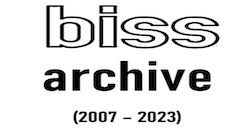In recent years, Eurasian integration, between Belarus, Kazakhstan and Russia in particular, has gained momentum. Following two decades of different efforts, marked by varying degree of success, the Customs Union has been established and the Common Economic Space is undergoing an active formation process. This fact indicates that Eurasian integration is becoming a reality, which cannot be ignored and requires a thorough analysis by the expert community. Such an analysis may prepare the ground for formulating proposals about further development of this process, including implementation of the world’s best practices.
For this reason the Belarusian Institute for Strategic Studies (BISS) launches research in a new field in order to provide its expert analysis of Eurasian integration. Within its framework we are going to study all of the most essential dimensions of the integration process, with special focus on Belarus’s role and place in it. We will look into all the possible alternatives and offer our recommendations and suggestions on the integration process.
The first paper within the new dimension of research centers on the institutional structure of Eurasian integration. As integration between Belarus, Kazakhstan and Russia goes at a rapid pace, it is accompanied by essential legislative and institutional changes. This causes difficulties in understanding the institutional structure of the integration at its present stage. The first paper sets out to explain the institutional structure of Eurasian integration and present its comprehensive picture. This would be helpful in familiarization with the Eurasian integration institutions and in further integration-related research. The first paper primarily focuses on the most profound integration structures established by Belarus, Kazakhstan and Russia, namely the Customs Union and the Common Economic Space. Since they are closely interconnected with the Eurasian Economic Community, among other things, institutionally, the latter is going to be an integral part of our analysis.
Read full text in pdf

